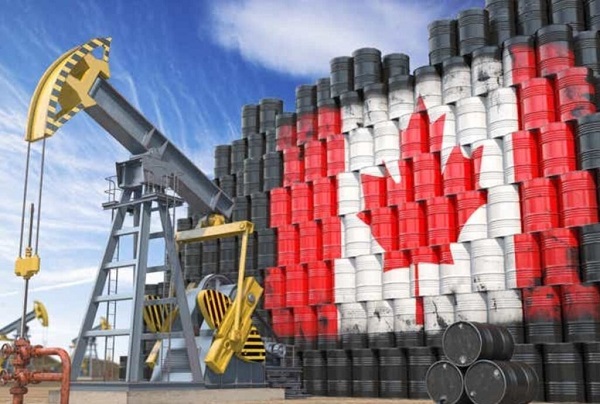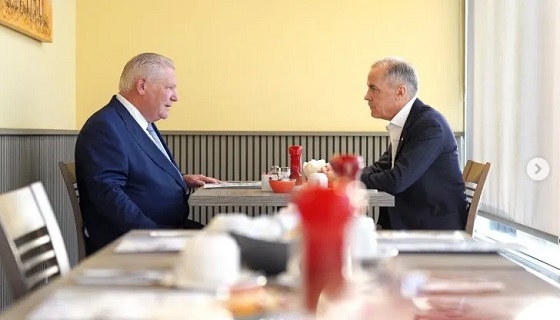Business
GOP Lawmakers Urge Coast Guard To Defend US Ports Where ‘Chinese Military Company’ Operates
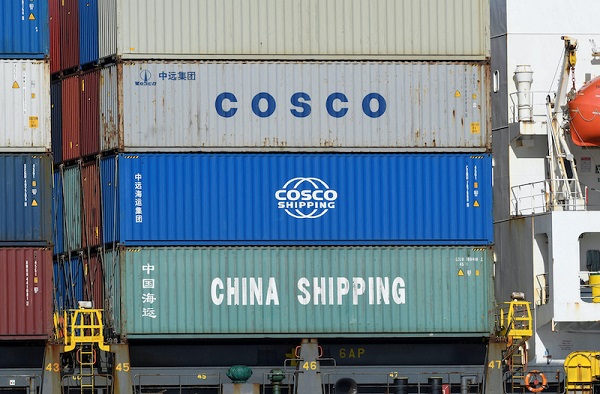

From the Daily Caller News Foundation
By Philip Lenczycki
Republican lawmakers urged the U.S. Coast Guard on Wednesday to take “decisive action” against a Chinese military company that has “expansive operations at major U.S. ports,” according to a letter exclusively obtained by the Daily Caller News Foundation.
The House Committee on Homeland Security and House Select Committee on the Chinese Communist Party sent a letter to U.S. Coast Guard Acting Commandant, Admiral Kevin E. Lunday requesting information and a classified briefing related to COSCO Shipping, a Chinese state-owned enterprise that the Department of Defense (DOD) recently added to its list of “Chinese Military Companies.” COSCO Shipping poses a “significant” national security threat to the U.S., ranging from “espionage, cyber intrusions, sabotage, and supply chain disruptions,” according to the letter.
“Permitting vessels and personnel affiliated with COSCO SHIPPING to operate within U.S. ports without adequate safeguards exposes the nation to unacceptable risks, particularly during times of increased geopolitical tension,” the letter states. “As the lead federal agency for maritime security, the U.S. Coast Guard (USCG) must take decisive action to mitigate these risks.”
The letter is signed by House Homeland Security chairman, Tennessee Rep. Mark Green, China Select Committee chairman, Michigan Rep. John Moolenaar, Florida Rep. Carlos Gimenez and South Dakota Rep. Dusty Johnson.
The People’s Republic of China (PRC) exploits “Chinese Military Companies” for intelligence and military purposes as part of its “Military-Civil Fusion Strategy,” the letter states.
Military-Civil Fusion “supports the modernization goals of the People’s Liberation Army by ensuring it can acquire advanced technologies and expertise developed by PRC companies, universities, and research programs that appear to be civilian entities,” according to the DOD.
Toward that end, China engages in “forced technology transfer, intelligence gathering, and outright theft,” and directs Chinese enterprises to “undertake classified military R&D and weapons production,” according to the State Department.
In addition to being a state-owned enterprise, the committee’s letter warns that COSCO Shipping vessels “frequently have Chinese Communist Party (CCP) political commissars embedded amongst their crews.”
COSCO Shipping’s website includes a section for “Party building” and states that its CEO, Wan Min, also serves as the Party secretary of the firm’s internal CCP branch. A “Party branch” is the smallest “grass-roots” CCP organization, and one must be established within any Chinese institutions containing three or more Party members, according to the Chinese government.
The committee’s letter also urges the USCG to intensify its protocols for “screening vessels, owners, and crew members associated with COSCO Shipping and other entities linked to the PLA or the PRC’s security and intelligence services.”
COSCO Shipping’s previous CEO, Xu Lirong, simultaneously served as deputy director of the China International Culture Exchange Center (CICEC), which former analyst at the Australian Strategic Policy Institute Alex Joske identified as a front for China’s premier civilian intelligence service, the Ministry of State Security, the DCNF previously reported.
“It is essential that biographical information for all foreign mariners, particularly those from the PRC and other high-risk countries, undergo comprehensive scrutiny utilizing the complete range of classified and unclassified data resources accessible to the U.S. government,” the committee’s letter states.
A USCG spokesperson told the DCNF it “routinely evaluates vessels before arrival within U.S. waters” and examines vessels “for safety and security” after arrival as well.
The committee’s letter also requests for USCG to provide answers to nine questions by Feb. 3.
More than half of the questions relate to the protocols, process, or datasets USGC uses to vet foreign vessels and mariners.
For example, one question asks: “What classified and unclassified datasets are used by the USCG to vet foreign mariners, vessel owners, and operators?”
Another question asks: “Is the USGC’s vetting and screening process for foreign vessels and mariners fully automated, partially automated, or primarily manual?”
Other questions concern USGC’s possible coordination with federal agencies, like the FBI, and inquire into whether or not USGC has conducted a risk assessment specific to COSCO Shipping.
“The USCG must prioritize the integration of both classified and unclassified intelligence, strengthen interagency coordination and collaboration, and leverage advanced technological solutions to enhance its ability to detect and deter emerging threats,” the committee’s letter states.
COSCO Shipping did not respond to multiple requests for comment.
Agriculture
Cloned foods are coming to a grocer near you

This article supplied by Troy Media.
And you may never find out if Health Canada gets its way
Cloned-animal foods could soon enter Canada’s food supply with no labels identifying them as cloned and no warning to consumers—a move that risks public trust.
According to Health Canada’s own consultation documents, Ottawa intends to remove foods derived from cloned animals from its “novel foods” list, the process that requires a pre-market safety review and public disclosure. Health Canada defines “novel
foods” as products that haven’t been commonly consumed before or that use new production processes requiring extra safety checks.
From a regulatory standpoint, this looks like an efficiency measure. From a consumer-trust standpoint, it’s a miscalculation.
Health Canada argues that cloned animals and their offspring are indistinguishable from conventional ones, so they should be treated the same. The problem isn’t the science—it’s the silence. Canadians are not being told that the rules for a controversial technology are about to change. No press release, no public statement, just a quiet update on a government website most citizens will never read.
Cloning in agriculture means producing an exact genetic copy of an animal, usually for breeding purposes. The clones themselves rarely end up on dinner plates, but their offspring do, showing up in everyday products such as beef, milk or pork. The benefits are indirect: steadier production, fewer losses from disease or more uniform quality.
But consumers see no gain at checkout. Cloning is expensive and brings no visible improvement in taste, nutrition or price.
Shoppers could one day buy steak from the offspring of a cloned cow without any way of knowing, and still pay the same, if not more, for it.
Without labels identifying cloned origin, potential efficiencies stay hidden upstream. When products born from new technologies are mixed with conventional ones, consumers lose their ability to differentiate, reward innovation or make an informed choice. In the end, the industry keeps the savings while shoppers see none.
And it isn’t only shoppers left in the dark. Exporters could soon pay the price too. Canada exports billions in beef and pork annually, including to the EU. If cloned origin products enter the supply chain without labelling, Canadian exporters could face additional scrutiny or restrictions in markets where cloning is not accepted. A regulatory shortcut at home could quickly become a market barrier abroad.
This debate comes at a time when public trust in Canada’s food system is already fragile. A 2023 survey by the Canadian Centre for Food Integrity found that only 36 per cent of Canadians believe the food industry is “heading in the right direction,” and fewer than half trust government regulators to be transparent.
Inserting cloned foods quietly into the supply without disclosure would only deepen that skepticism.
This is exactly how Canada became trapped in the endless genetically modified organism (GMO) debate. Two decades ago, regulators and companies quietly introduced a complex technology without giving consumers the chance to understand it. By denying transparency, they also denied trust. The result was years of confusion, suspicion and polarization that persist today.
Transparency shouldn’t be optional in a democracy that prides itself on science based regulation. Even if the food is safe, and current evidence suggests it is, Canadians deserve to know how what they eat is produced.
The irony is that this change could have been handled responsibly. Small gestures like a brief notice, an explanatory Q&A or a commitment to review labelling once international consensus emerges would have shown respect for the public and preserved confidence in our food system.
Instead, Ottawa risks repeating an old mistake: mistaking regulatory efficiency for good governance. At a time when consumer trust in food pricing, corporate ethics and government oversight is already fragile, the last thing Canada needs is another quiet policy that feels like a secret.
Cloning may not change the look or taste of what’s on your plate, but how it gets there should still matter.
Dr. Sylvain Charlebois is a Canadian professor and researcher in food distribution and policy. He is senior director of the Agri-Food Analytics Lab at Dalhousie University and co-host of The Food Professor Podcast. He is frequently cited in the media for his insights on food prices, agricultural trends, and the global food supply chain.
Troy Media empowers Canadian community news outlets by providing independent, insightful analysis and commentary. Our mission is to support local media in helping Canadians stay informed and engaged by delivering reliable content that strengthens community connections and deepens understanding across the country.
Business
Bank of Canada governor warns citizens to anticipate lower standard of living

From LifeSiteNews
“Unless something changes, our incomes will be lower than they otherwise would be.”
Bank of Canada Governor Tiff Macklem gave a grim assessment of the state of the economy, essentially telling Canadians that they should accept a “lower” standard of living.
In an update on Wednesday in which he also lowered Canada’s interest rate to 2.25 percent, Macklem gave the bleak news, which no doubt will hit Canadian families hard.
“What’s most concerning is, unless we change some other things, our standard of living as a country, as Canadians, is going to be lower than it otherwise would have been,” Macklem told reporters.
“Unless something changes, our incomes will be lower than they otherwise would be.”
Macklem said what Canada is going through “is not just a cyclical downturn.”
Asked what he meant by a “cyclical downturn,” Macklem blamed what he said were protectionist measures the United States has put in place such as tariffs, which have made everything more expensive.
“Part of it is structural,” he said, adding, “The U.S. has swerved towards protectionism.”
“It is harder to do business with the United States. That has destroyed some of the capacity in this country. It’s also adding costs.”
Macklem stopped short of saying out loud that a recession is all but inevitable but did say growth is “pretty close to zero” at the moment.
While some U.S. protectionist measures put in place by President Donald Trump have impacted Canada, the reality is that since the Liberals took power in 2015, first under former Prime Minister Justin Trudeau and now under Mark Carney, government spending has been out of control, according to experts. Rising inflation is rampant.
Canadian taxpayers are already dealing with high inflation and high taxes, in part due to the Liberal government overspending and excessive money printing, and even admitting that giving money to Ukraine comes at the “taxpayers’” expense.
As reported by LifeSiteNews, Carney boldly proclaimed earlier this week that his Liberal government’s upcoming 2025 budget will include millions more in taxpayer money for “SLGBTQI+ communities” and “gender” equality and “pride” safety.
As reported by LifeSiteNews, the Canadian Taxpayers Federation (CTF) recently blasted the Carney government for spending $13 million on promotional merchandise such as “climate change card games,” “laser pens and flying saucers,” and “Bamboo toothbrushes” since 2022.
Canadians pay some of the highest income and other taxes in the world. As reported by LifeSiteNews, Canadian families spend, on average, 42 percent of their income on taxes, more than food and shelter costs. Inflation in Canada is at a high not seen in decades.
-

 Alberta24 hours ago
Alberta24 hours agoFrom Underdog to Top Broodmare
-

 International1 day ago
International1 day agoPrince Andrew banished from the British monarchy
-
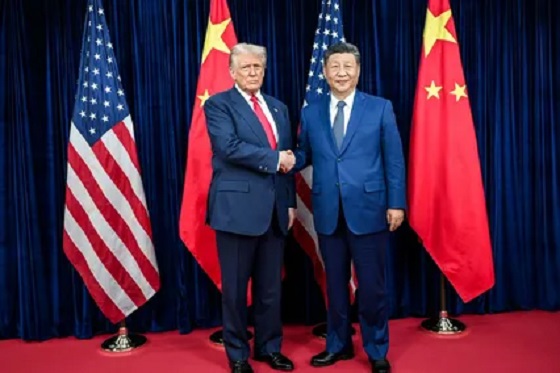
 Business1 day ago
Business1 day ago“We have a deal”: Trump, Xi strike breakthrough on trade and fentanyl
-

 Business2 days ago
Business2 days agoCanada’s attack on religious charities makes no fiscal sense
-

 Alberta1 day ago
Alberta1 day agoProvince orders School Boards to gather data on class sizes and complexity by Nov 24
-

 National1 day ago
National1 day agoWatchdog Presses Ottawa to Release Hidden Lobbying Rulings
-
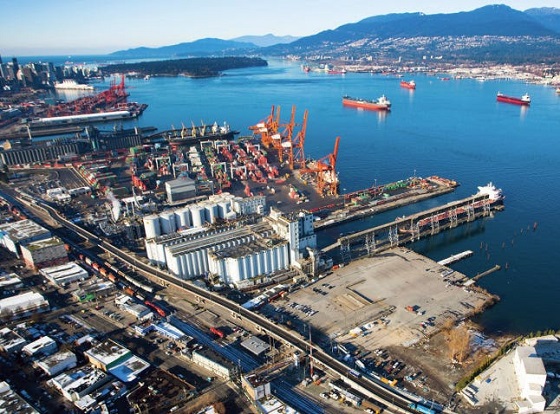
 Crime1 day ago
Crime1 day agoCanada Seizes 4,300 Litres of Chinese Drug Precursors Amid Trump’s Tariff Pressure Over Fentanyl Flows
-

 Alberta1 day ago
Alberta1 day agoHow one major media torqued its coverage – in the take no prisoners words of a former Alberta premier







